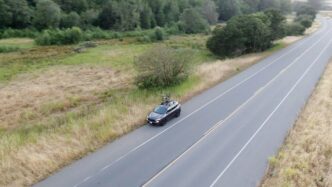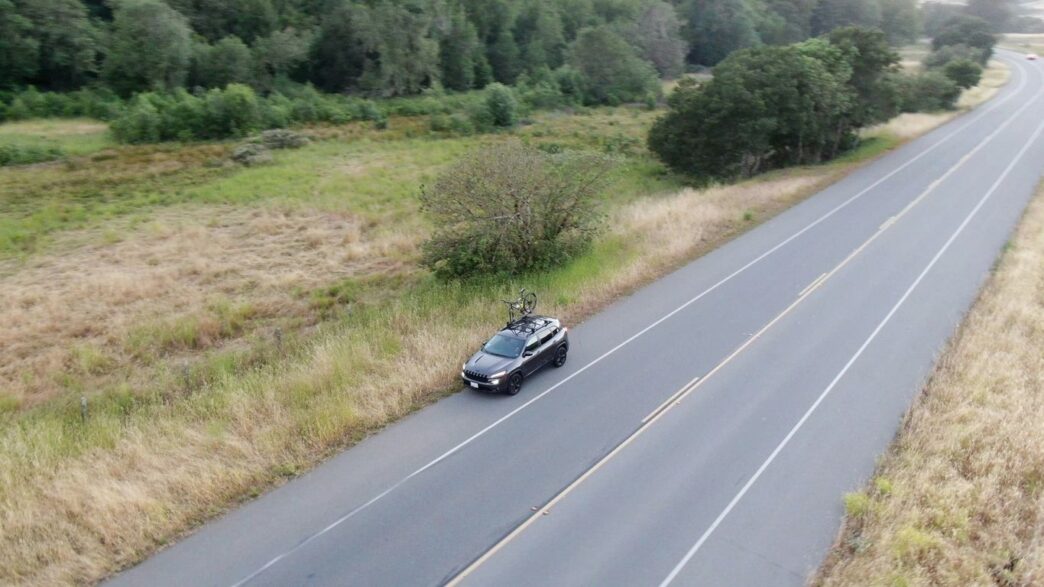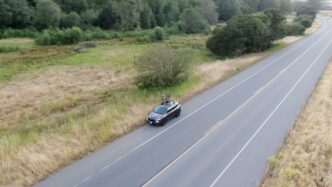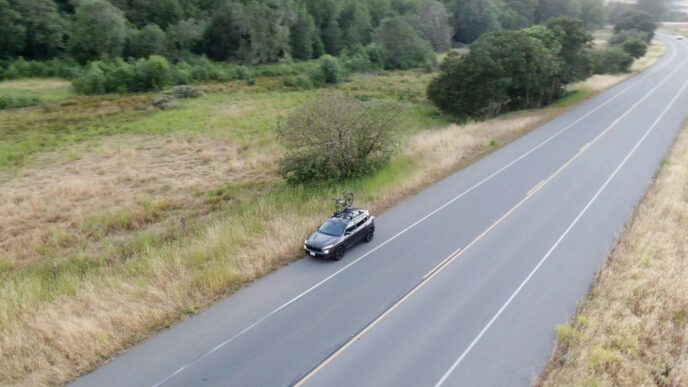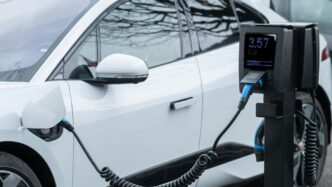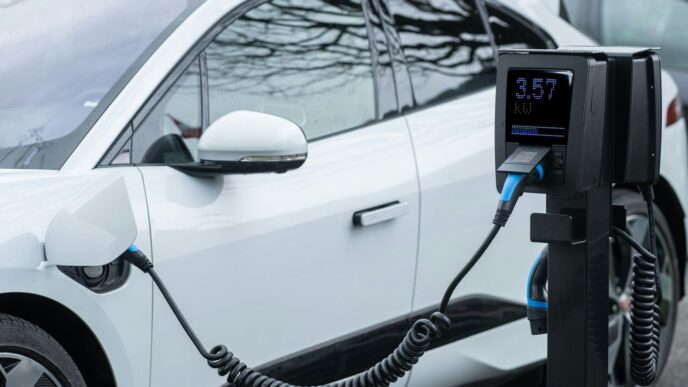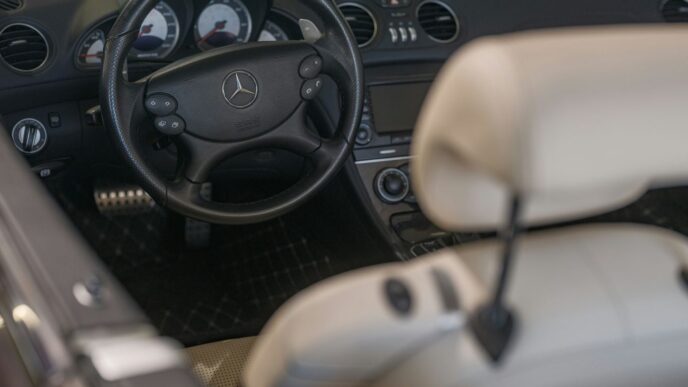DeepRoute.ai: A Pioneer in Autonomous Driving
It feels like every car company is talking about self-driving tech these days, right? But some are actually making serious moves. DeepRoute.ai is one of those companies. They’ve been recognized by IDC, a big name in tech research, for their assisted driving capabilities. This isn’t just some futuristic dream; IDC’s report says that autonomous driving is becoming a major reason why people decide to buy a car. DeepRoute.ai is definitely at the forefront of this shift.
IDC Recognition for Assisted Driving Capabilities
IDC recently put out their 2025 Assisted Driving Capability Assessment, and DeepRoute.ai scored really well. They looked at a bunch of things like how well cars can drive themselves on highways and in cities, parking assistance, and more. DeepRoute.ai really stood out in:
- Urban Navigation on Autopilot (NOA): Handling city streets with all sorts of traffic.
- Urban Lane Centering Control (LCC): Keeping the car centered in its lane in busy city driving.
- Highway Lane Centering Control (LCC): Staying in its lane smoothly on the highway.
Basically, they’re showing they can handle tricky, real-world driving situations, which is a huge deal.
Leading Purchase Decision Factor for Car Buyers
It’s becoming clear that advanced driver assistance systems aren’t just a nice-to-have anymore. According to IDC’s findings, this technology is now a significant factor influencing car buying decisions. People are looking for cars that can help them drive, especially in complex environments. DeepRoute.ai’s strong performance in these areas means they are well-positioned to meet this growing consumer demand.
Exceptional Performance in Complex Scenarios
What really sets DeepRoute.ai apart is their ability to perform well when things get complicated. Think about driving in a busy city with lots of different vehicles, pedestrians, and unpredictable traffic. DeepRoute.ai’s systems have shown they can manage these multi-traffic situations effectively. This kind of capability is exactly what’s needed as we move beyond basic driver assistance and towards more advanced autonomous features.
The DeepRoute-Driver 2.0 System
DeepRoute.ai has rolled out its DeepRoute-Driver 2.0 system, and it’s quite a step forward. This isn’t just some concept; it’s a Level 4 self-driving solution that’s ready for production. What’s really striking is the price point – around $10,000. For that, you’re getting a pretty robust setup: five solid-state lidar sensors, eight cameras, their own computing hardware, and you can even add a millimeter-wave radar if you want. It’s a serious piece of tech designed to be integrated into cars without breaking the bank.
Ambitious Self-Driving Solution Unveiled
This system represents a significant ambition from DeepRoute.ai. They’re not just aiming for incremental improvements; they’re pushing towards full autonomy. The DeepRoute-Driver 2.0 is built with mass production in mind, meaning it’s designed to be manufactured at scale. This approach is key to making advanced self-driving features accessible to more people and more vehicles.
Production-Ready Level 4 System
What does Level 4 mean? Basically, the car can handle all driving tasks under certain conditions without human intervention. Think of it as highly automated driving where the system is in charge for specific operational design domains. DeepRoute-Driver 2.0 is built to meet these standards, making it a production-ready option for automakers looking to equip their vehicles with advanced autonomous capabilities. It’s a big deal because it moves the technology from testing grounds to real roads.
Cost-Effective Hardware Integration
One of the biggest hurdles for widespread autonomous driving adoption has always been cost. DeepRoute.ai seems to have tackled this head-on with the DeepRoute-Driver 2.0. By integrating a suite of sensors and their proprietary computing system at a target price of about $10,000, they’re making advanced autonomous hardware much more affordable. This cost-effectiveness is crucial for getting these systems into the hands of consumers and fleet operators alike. It’s not just about having the technology; it’s about making it practical and economically viable for the market.
Advancements with the VLA Model
DeepRoute.ai’s new VLA model is a pretty big deal for how self-driving cars will work. Think of it as a smarter brain for the car. It’s not just about seeing the road; it’s about understanding what it sees, figuring out what to do, and then actually doing it, almost like a person would.
Enhanced Scenario Understanding and Reasoning
The VLA model is really good at figuring out what’s going on around the car, even in tricky situations. It uses something called Chain-of-Thought reasoning, which means it can think through problems step-by-step. This helps it understand cause and effect, like if a truck ahead is slowing down, it knows it needs to slow down too. It also has a huge amount of information built-in, like a super-smart encyclopedia for driving. This means it can learn and adapt really quickly to different roads, signs, and even different driving styles in other countries. This ability to quickly get the hang of new environments is what makes it so useful, especially in places like Europe with its complex roads.
Human-Like Interaction and Control
What’s cool about VLA is how it makes the car’s actions seem more natural. It can do things like slow down before you even get to a sharp turn, or find a new way around a big truck blocking the road. It’s also got features like reading signs (that’s the OCR part) and even understanding voice commands. This makes the car feel less like a robot and more like a careful driver. It’s all about making the ride smoother and safer by anticipating what might happen.
Transparency and User Trust in Autonomous Driving
One of the biggest hurdles for self-driving cars is getting people to trust them. The VLA model helps with this because it’s not a total black box. You can actually see how it makes its decisions, which makes it easier to understand why the car did what it did. This openness is key to building confidence. When people know how the system works and can see it’s making sensible choices, they’re more likely to feel comfortable using it.
DeepRoute.ai’s Global Market Strategy
So, DeepRoute.ai isn’t just sitting around; they’re really pushing to get their self-driving tech out there everywhere. They’ve got this two-part plan for going global, which seems pretty smart. First off, they’re using all the experience they’ve gained from making a ton of cars already – over 100,000, can you believe it? – to help their partners, like smart, sell more cars with this tech in other countries. It’s like they’re saying, ‘Hey, we know how to build this stuff at scale, let’s help you do it too.’
Then, there’s the other side of it. They’re also creating specific versions of their assisted driving systems for different places, like Europe, Japan, and South Korea. This means the tech isn’t just one-size-fits-all. They’re tweaking it to work well with local roads, traffic rules, and even how people actually drive in those areas. It’s all about making sure the system fits right in, no matter where it’s used.
Here’s a quick look at how they’re approaching this:
- Helping Domestic Partners Abroad: They’re sharing their know-how from mass production to help companies they already work with expand their reach internationally.
- Creating Localized Solutions: They’re developing specific tech packages for automakers in places like Europe and Asia, making sure it’s a good fit for those markets.
- Dual-Track Approach: This combination of supporting existing partners and building new, localized solutions seems to be their main strategy for getting their tech adopted worldwide.
This dual approach is key to their plan for widespread adoption. They want to make sure their advanced driving systems are not only capable but also practical and well-suited for drivers all over the globe.
DeepRoute.ai’s Commitment to Safety and Adaptability

When you’re building something as complex as self-driving tech, safety has to be the absolute top priority. It’s not just about making the car drive itself; it’s about making sure it drives well, and that it can handle all sorts of weird situations that pop up on the road. DeepRoute.ai really seems to get this, and they’ve put a lot of thought into making their systems safe and adaptable, especially for different places around the world.
VLA Model for European Roads
Europe’s roads can be a real challenge, right? They’re often older, narrower, and have a lot more variation than you might see in other places. DeepRoute.ai’s VLA model is specifically designed to handle this. It uses something called ‘Chain-of-Thought’ reasoning, which basically means it can think things through more like a person would, considering what might happen next. This helps it deal with tricky stuff like unexpected road closures or complex intersections. Plus, it’s got this ability to learn really fast from new information, so it can get up to speed with different driving styles and road signs pretty quickly. This makes it super useful for places like Europe where things aren’t always straightforward.
Flexible Platform Architecture
One of the cool things about the DeepRoute IO 2.0 system is how adaptable it is. It’s not a one-size-fits-all kind of deal. You can set it up in a couple of ways:
- With LiDAR: This uses lasers to build a detailed 3D map of the surroundings.
- Pure Vision: This relies solely on cameras, which can be more cost-effective.
They also let you use different kinds of computer chips that are built for cars. This flexibility means car companies can put this smart driving tech into all sorts of different vehicles, from small cars to bigger ones, and in different countries. It’s all about making it work wherever it’s needed.
Modular Design for Global Adoption
Think of the system like building with LEGOs. It’s made up of different pieces that can be swapped out or rearranged. This modular design is a big deal for getting it adopted all over the world. If a car company needs a specific feature for a certain market, they can just add or change that module. It also makes repairs and updates a lot easier. This way, DeepRoute.ai can tailor its technology for different regions without having to start from scratch every time. It’s a smart way to make sure their self-driving tech can be used by lots of different people and companies, no matter where they are.
Shaping the Future of Smart Mobility
DeepRoute.ai isn’t just building self-driving tech; they’re really trying to change how we all get around. It’s all about making transportation smarter and, you know, more reliable for everyone. They’ve got this DeepRoute IO 2.0 platform, and it’s ready to go for mass production. Think of it as the next big step for intelligent transport, not just in one place, but all over the world.
Continuous Learning and Adaptation
One of the coolest things about their VLA model is how it learns. It’s like it has a massive brain, pulling from all sorts of information. This means it can get up to speed really fast, figuring out new roads, signs, and even different driving styles pretty quickly. This ability to adapt means the system works well, even in tricky places like Europe’s busy streets. It’s not just about knowing things; it’s about being able to use that knowledge on the fly.
Enhanced Safety Features
Safety is obviously a huge deal, and VLA has some neat tricks up its sleeve. It can understand what’s happening around it in 3D space, explain why it’s making a certain decision, and even read signs. This lets the car drive more like a careful human would. For example, it can slow down before a blind corner or figure out a new route if a big truck is blocking the way. It’s about making smart, safe choices, especially when things get complicated at intersections.
Driving Industry Toward Reliable Mobility
So, what’s the big picture here? DeepRoute.ai is putting together smarts, flexibility, and safety to push the whole industry forward. They’re aiming for a future where getting from point A to point B is not just automated, but also dependable. Their focus on continuous improvement and making the technology work everywhere means we’re moving towards a transportation system we can actually count on.
Looking Ahead
So, what’s next for DeepRoute.ai? It’s pretty clear they’re not slowing down. With their VLA model and the DeepRoute IO 2.0 platform, they’re really pushing what self-driving cars can do, making them safer and easier for people to trust. They’ve already got a solid track record with over 100,000 cars on the road, and they’re not stopping there. Expanding into places like Europe and Japan shows they’re serious about making this technology a global thing. It feels like we’re getting closer to a future where cars can handle a lot of the driving for us, and DeepRoute.ai seems to be a big part of making that happen.

